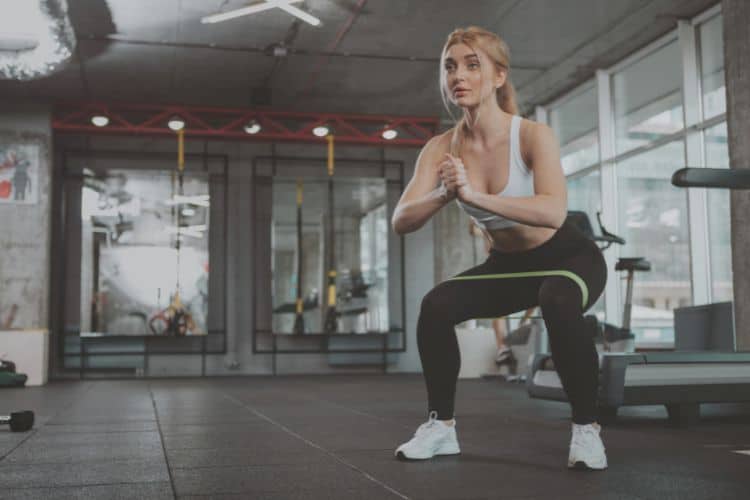Sign up for workout ideas, training advice, reviews of the latest gear and more.






If you’re looking for a quick and effective way to sculpt broad, defined shoulders, the 20-minute lateral raise free weights workout is your perfect match. Designed for busy fitness enthusiasts and beginners alike, this workout targets your deltoid muscles using dumbbells or free weights to enhance shoulder width, improve posture, and boost upper body strength. Whether you’re training at home or the gym, lateral raises can fit easily into your routine—and when done correctly, even short sessions deliver massive gains.
In this guide, we’ll break down everything you need to know to master a 20-minute lateral raise routine, from form tips to warm-ups, variations, benefits, and a complete workout plan.
The lateral raise is a shoulder isolation exercise that primarily targets the medial deltoid, the side portion of your shoulder. The goal of this movement is to lift the arms out to the side until they’re parallel to the floor while maintaining a slight bend at the elbow.
Free weights, such as dumbbells, allow for a natural range of motion and muscle activation, especially in smaller stabilizer muscles. Unlike machines, free weights force your body to engage your core and improve overall balance during each rep.
Incorporating lateral raises into your training offers a wide range of fitness benefits:
Lateral raises are the go-to exercise for widening the shoulders and giving the illusion of a V-shaped physique.
Consistent lateral raise training helps define the outer delts, which adds tone and aesthetic shape to your upper body.
Stronger shoulders lead to better performance in pressing movements and improved overall upper body strength.
Weak or underdeveloped delts can contribute to rounded shoulders. Lateral raises help bring the shoulders back and aligned properly.
Because it’s a targeted isolation movement, just 20 minutes of lateral raise variations can deliver solid hypertrophy and tone when programmed correctly.
To perform this 20-minute free weights shoulder workout, you’ll need:
Before jumping into the workout, mastering proper form is key. Here’s how to perform the standard lateral raise with dumbbells:
Pro tip: Don’t swing or use momentum. Focus on slow, controlled reps to keep tension on the delts.
The following routine combines standard and dynamic lateral raise variations. Perform this circuit-style routine 3–4 times a week for maximum results.
Before jumping into the shoulder work, spend 3 minutes warming up to lubricate the shoulder joint and activate the delts.
This workout includes 4 rounds of shoulder movements (including lateral raise variations). Each round lasts 5 minutes, with a 30-second rest between exercises.
1. Standard Standing Dumbbell Lateral Raise – 12 reps
Keep it strict and controlled to engage the medial deltoids.
2. Seated Lateral Raise – 12 reps
Removes lower body momentum and isolates the shoulder.
3. Front-to-Lateral Raise Combo – 10 reps
Alternate raising the dumbbells to the front and sides.
4. Resistance Band Lateral Raise – 15 reps
Optional for extra burnout. Use a light band and perform high-rep raises.
Rest: 30 seconds
1. Tempo Lateral Raises (3:1) – 10 reps
3 seconds up, 1 second down. Intense burn with lighter weights.
2. Lateral Raise Pulse (Mid-Range) – 15 seconds
Hold dumbbells at shoulder height and pulse within a small range.
3. Isometric Hold Lateral Raise – 20 seconds hold
Hold the arms in a lateral position for time.
4. Reverse Grip Lateral Raise – 12 reps
Palms face upward for a slight shift in activation.
Rest: 30 seconds
1. Slight Lean Lateral Raise – 10 reps each arm
Lean slightly forward to increase deltoid stretch.
2. Alternating Dumbbell Raises – 20 total reps
Lift one arm at a time in controlled motion.
3. Dumbbell Lateral Raise with Hold – 10 reps
Pause at the top of each rep for 2 seconds.
4. Seated Heavy Dumbbell Raise – 8 reps
Go heavier while seated to remove momentum.
Rest: 30 seconds
1. Drop Set Lateral Raises – 3 sets of 10–12 reps
Start with a moderate weight, then drop to a lighter set without rest.
2. Bodyweight Arm Circles (burnout) – 30 seconds forward + 30 seconds backward
A killer finisher that torches the delts without weights.
3. Rear Delt Fly (Optional) – 10 reps
Add this move to balance shoulder development.
Wrap up with light shoulder stretches:
To make the most out of your 20-minute sessions, consider these pro tips:
Don’t go heavy just to impress. Poor form with heavy dumbbells increases injury risk and decreases effectiveness. Instead, start with lighter weights (5–10 lbs) and focus on muscle-mind connection.
Because you’re using light weights, pushing your sets close to muscular failure maximizes hypertrophy. When the last few reps feel tough but doable, you’re in the growth zone.
Add pressing movements like overhead dumbbell press or Arnold press on alternate days for a full shoulder development program.
Keep a log of your sets, reps, and weights used. This helps you monitor overload and adapt the program as your shoulders strengthen.
Even a short 20-minute session can be ineffective if your form is off. Watch for these common errors:
If you’re swinging the dumbbells or leaning backward, you’re using your traps or lower back—not your delts.
Raising your arms above shoulder height transfers tension to the upper traps. Stop at parallel to maximize shoulder targeting.
Locking out the elbows places excess strain on the joints. Always maintain a slight bend.
If your traps are rising, you’re offloading the work. Keep your shoulders relaxed and focus on the medial deltoid.
Lateral raise variations keep workouts effective and challenging. Rotate these in your 20-minute routines:
This 20-minute free weights routine is great for:
Don’t underestimate the power of short, focused workouts. The 20-minute lateral raise free weights workout is a shoulder-sculpting powerhouse that fits into any schedule. It’s efficient, effective, and totally scalable based on your strength level. Whether you’re chasing aesthetic gains, functional strength, or improved posture, this routine can get you there—one controlled raise at a time.
Stay consistent, track your progress, and fine-tune your technique. Over time, those 20-minute sessions will add up to impressive delt development and noticeable upper body changes.
Want more workout and video guide?
Follow us on Pinterest, Facebook, and Subscribe to our Newsletter and Stay tuned for FREE downloads of our App coming soon!
Stay up to date on the latest women’s health, fitness and lifestyle trends and tips.